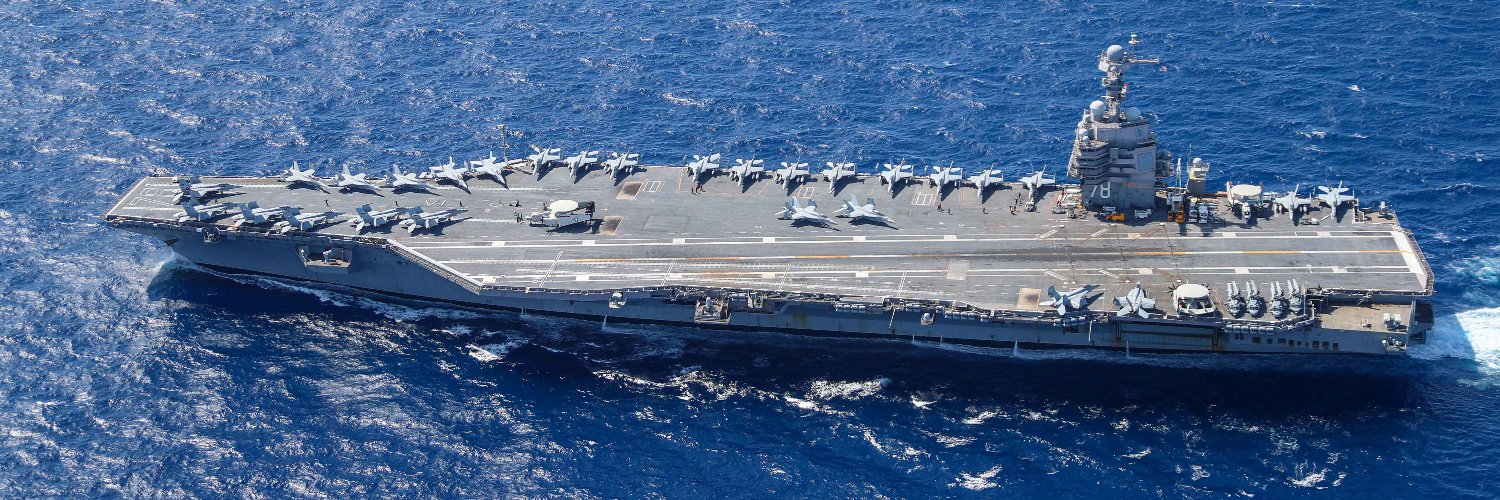Ready. To. Deploy. #Warship78 @US2ndFleet @COMNAVAIRLANT11 @USNavy @flynavy https://t.co/U7HKjHGWj6 pic.twitter.com/sx1Txlrev4
— USS Gerald R. Ford (CVN 78) (@Warship_78) September 29, 2022
On October 4, the USS Gerald R. Ford finally departed Norfolk, Virginia, for a trip across the Atlantic. The ship is the first of the Ford-class aircraft carriers, nuclear-powered hangars-and-runways that serve as the centerpiece of the US Navy’s fleets and, as such, project American military might all across the globe. While the Ford has already sailed on sea trials, this will be its first deployment as an operational part of the Navy. For this mission, the Ford will include at least one foreign port of call, but the journey itself is set to be a shorter voyage than a typical carrier deployment.
Construction began on 11 August 2005 by Northrup Grumman under a contract for $2.7 billion, with a ceremonial steel cut for a 15-ton plate that forms part of a side shell unit of the carrier. The keel was laid in 2009, and it was formally commissioned in 2017.
Almost everything that could go wrong did go wrong and the ballooning costs eventually totaled $13.027 billion, making the Gerald R. Ford the most expensive warship ever built. The ship was first declared operational in December 2021, though it suffered more delays as work on technical problems, like weapons elevators, was still needed before it could properly set sail.
“At the instant that the last mooring line leaves the pier or buoy, or the moment that the anchor is aweigh, the boatswain’s mate of the watch blows a long blast on his whistle and passes the word, ‘ Underway-shiftcolors .'”
https://www.seaflags.us/customs/customs
The Ford borrows a hull design from the Nimitz class, though it is somewhat modified. Internally, the carrier is redesigned to maximize both its utility and minimize long-term costs. This includes, most notably, the Electromagnetic Aircraft Launch System (EMALS), which uses a linear induction motor rather than the conventional steam piston on earlier carriers. Steam catapults help planes get up to speed when taking off from the short carrier runways, pulling a cable that helps hurl the plane as it accelerates to flight. EMALS replaces the steam buildup and launch of the previous system for an electromagnetic rail, which can be reset and reused more quickly. The system’s main advantage is that it accelerates aircraft more smoothly, putting less stress on their airframes. Compared to steam catapults, the EMALS also weighs less, is expected to cost less and require less maintenance, and can launch both heavier and lighter aircraft than a steam piston-driven system. It also reduces the carrier’s requirement of fresh water, thus reducing the demand for energy-intensive desalination.
The Ford is the eleventh aircraft carrier presently in the fleet to enter active service, and it’s the first of the new design. As of 2017, she is the world’s largest aircraft carrier, and the largest warship ever constructed in terms of displacement. The previous Nimitz-class carriers first entered service in 1975, with the most recent of that class joining in 2009. Eleven carriers is more than that of any other nation, and is the minimum allowed by Congress. That number does not include the Navy’s amphibious assault ships, in both Wasp and America classes, which have flight decks and are comparable in size to the aircraft carriers of other nations.
“Shift Colors!” is a phrase spoken in Naval sea ports as ships drop their last line connecting them to land. Once this occurs, the United States flag is shifted from the Jack Staff located on the fantail (back of the ship) to the main mast where it will fly until once again anchored or alongside a pier. This is also when all crewmen aboard shift their attention to their demanding duties at sea.
Underway, shift colors! Today, the Arleigh Burke-class destroyers, USS Bulkeley (#DDG84) and USS James E. Williams (#DDG95), are at-sea for Task Force Exercise (TFEX) 23-2. This training exercise kicks off in conjuction with the USS Gerald R. Ford (#CVN78) deployment. pic.twitter.com/qCrTJnTUyk
— Carrier Strike Group 4 (@CSG_4) October 5, 2022
